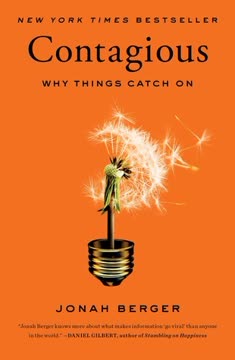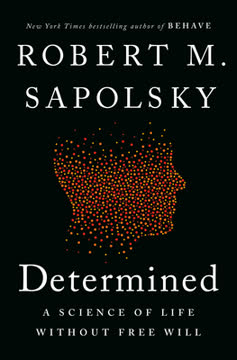Key Takeaways
1. Behavioral economics challenges traditional assumptions about rational decision-making
Behavioural economics extends economic principles by allowing that our decisions are affected by social and psychological influences, as well as a rational calculation of benefits and costs.
Complex decision-making. Traditional economics assumes that individuals make rational decisions based on complete information and stable preferences. However, behavioral economics recognizes that human decision-making is often influenced by cognitive biases, emotions, and social factors. This approach provides a more realistic understanding of how people actually make economic choices.
Interdisciplinary approach. Behavioral economics draws insights from psychology, sociology, neuroscience, and other fields to enrich economic analysis. By incorporating these diverse perspectives, it offers a more comprehensive framework for understanding human behavior in economic contexts. This interdisciplinary approach has led to new insights into phenomena such as:
- Consumer behavior and marketing strategies
- Financial decision-making and investment patterns
- Public policy design and implementation
- Labor market dynamics and workplace motivation
2. Intrinsic and extrinsic motivations shape our economic choices
Extrinsic motivations capture the incentives and rewards external to us as individuals—for example, when the world and the people around us encourage us to do something we would otherwise be reluctant to do.
Types of motivation. Behavioral economists distinguish between two main types of motivations:
- Intrinsic motivations: Internal drives such as personal satisfaction, curiosity, or enjoyment
- Extrinsic motivations: External rewards or punishments, such as money, praise, or social status
Crowding out effect. An important insight from behavioral economics is that extrinsic motivations can sometimes undermine intrinsic motivations. For example, paying people for activities they previously enjoyed for their own sake may reduce their intrinsic motivation to engage in those activities. This phenomenon has implications for:
- Workplace incentive structures
- Educational policies and practices
- Charitable giving and volunteerism
- Environmental conservation efforts
3. Social influences significantly impact our economic behavior
We care about others around us, or not; they care about us, or not. We worry about fairness and tend to prefer fair outcomes over unfair outcomes.
Social preferences. Behavioral economists have identified several ways in which social factors influence economic decisions:
- Fairness concerns: People often prefer equitable outcomes, even at a personal cost
- Trust and reciprocity: The tendency to cooperate with those who have treated us well in the past
- Social norms: Unwritten rules that guide behavior within a group or society
- Herding: The inclination to follow the actions of others, especially in uncertain situations
Experimental evidence. Various economic games, such as the Ultimatum Game and Public Goods Game, have demonstrated the importance of social preferences in decision-making. These experiments show that people often deviate from purely self-interested behavior in ways that traditional economic models struggle to explain.
4. Heuristics and biases lead to systematic errors in decision-making
When we decide quickly, sometimes our choices are distorted away from what is best for us.
Mental shortcuts. Heuristics are cognitive shortcuts that help us make decisions quickly and efficiently. While often useful, they can lead to systematic biases in judgment and decision-making. Some common heuristics and biases include:
- Availability heuristic: Overestimating the likelihood of events that are easily remembered
- Anchoring effect: Relying too heavily on the first piece of information encountered
- Confirmation bias: Seeking out information that confirms existing beliefs
- Status quo bias: Preferring the current state of affairs over change
Real-world implications. These cognitive biases can have significant consequences in various economic domains, such as:
- Investment decisions and financial markets
- Consumer behavior and marketing strategies
- Health and lifestyle choices
- Political decision-making and voting behavior
5. Prospect theory explains risk perception and loss aversion
Many behavioural experiments have shown that people suffer more from a loss than they gain pleasure from an equivalent gain—for example, we tend to care a lot more about losing £10 than we do about winning £10.
Key components. Prospect theory, developed by Daniel Kahneman and Amos Tversky, offers an alternative to traditional expected utility theory. Its main features include:
- Reference dependence: Evaluating outcomes relative to a reference point
- Loss aversion: Weighing losses more heavily than equivalent gains
- Diminishing sensitivity: Decreasing marginal impact of both gains and losses
- Probability weighting: Overweighting small probabilities and underweighting large ones
Applications. Prospect theory has been applied to explain various economic phenomena, including:
- The equity premium puzzle in financial markets
- Consumer behavior in response to framing effects
- Risk-taking behavior in different domains (e.g., financial, health)
- The endowment effect and status quo bias
6. Time inconsistency affects our long-term financial planning
We are disproportionately impatient in the short-term (we want our chocolate cake today) but when planning for the future, we are more patient (we are prepared to wait a year and a day for our chocolate cake).
Present bias. Time inconsistency refers to the tendency for people to value immediate rewards disproportionately higher than future rewards. This can lead to:
- Procrastination on important tasks
- Under-saving for retirement
- Difficulty in maintaining long-term commitments (e.g., diets, exercise routines)
- Addiction and other self-control problems
Policy implications. Understanding time inconsistency has led to the development of various "nudges" and policy interventions, such as:
- Automatic enrollment in retirement savings plans
- Commitment devices for saving or healthy behaviors
- Default options that promote long-term well-being
- Structured repayment plans for debt reduction
7. Emotions and personality traits influence economic decisions
Our personalities have an impact on many of our economic and financial decisions and choices. Often making decisions requires some thought, and our personality traits can determine our cognitive skills and, through our cognition, drive our choices.
Emotional factors. Emotions play a crucial role in decision-making, often interacting with cognitive processes in complex ways. Some key insights include:
- The affect heuristic: Using emotional reactions as a shortcut for complex decisions
- Mood congruence: The tendency for current emotions to influence judgments and decisions
- Regret aversion: Making choices to avoid potential future regret
Personality traits. Individual differences in personality can significantly impact economic behavior. For example:
- Conscientiousness is associated with better financial planning and job performance
- Risk tolerance is linked to investment choices and entrepreneurial activity
- Time preference (patience vs. impulsivity) affects saving and spending patterns
8. Behavioral insights can be applied to macroeconomic analysis
Behavioural macroeconomics focuses on how social and psychological factors, including optimism and pessimism, can help us to understand macroeconomic fluctuations.
Aggregate behavior. Behavioral macroeconomics seeks to understand how individual biases and social influences can lead to large-scale economic phenomena, such as:
- Business cycles and financial crises
- Inflation expectations and monetary policy effectiveness
- Labor market dynamics and unemployment
- Consumer confidence and spending patterns
Policy implications. Incorporating behavioral insights into macroeconomic analysis can lead to more effective policy interventions, including:
- Communication strategies for central banks
- Design of fiscal stimulus programs
- Approaches to managing economic expectations
- Strategies for promoting long-term economic growth
9. Nudges and choice architecture can guide better economic decisions
If policy-makers can better understand people's choice architecture then they can design policies to help people decide more effectively.
Choice architecture. The concept of choice architecture involves designing the context in which people make decisions to encourage better outcomes. Key principles include:
- Default options: Setting beneficial default choices
- Simplification: Making complex decisions easier to understand
- Social norms: Leveraging social influences to promote desired behaviors
- Feedback: Providing timely information about the consequences of choices
Ethical considerations. While nudges can be powerful tools for improving decision-making, they also raise important ethical questions about paternalism and individual autonomy. Policymakers must balance the potential benefits of nudges against concerns about manipulation and personal freedom.
Applications. Behavioral insights and nudges have been successfully applied in various domains, including:
- Increasing retirement savings through automatic enrollment
- Promoting energy conservation through social comparison feedback
- Improving health outcomes through better-designed medical forms and procedures
- Encouraging organ donation through opt-out systems
Last updated:
FAQ
What's "Behavioural Economics: A Very Short Introduction" about?
- Overview of Behavioural Economics: The book provides a concise introduction to behavioural economics, a field that extends traditional economic principles by incorporating psychological and social influences on decision-making.
- Interdisciplinary Approach: It highlights how behavioural economics integrates insights from psychology, sociology, neuroscience, and evolutionary biology to enrich our understanding of economic behaviour.
- Focus on Real-World Applications: The book discusses how behavioural economics is applied in policy-making and everyday decision-making, making economics more accessible and relevant to a broader audience.
Why should I read "Behavioural Economics: A Very Short Introduction"?
- Understand Human Decision-Making: The book offers insights into how real people make decisions, which can differ significantly from traditional economic models.
- Practical Applications: It provides examples of how behavioural economics is used in public policy and business to improve outcomes and efficiency.
- Broadened Perspective: Reading this book can help you appreciate the complexity of economic behaviour and the factors that influence it beyond mere financial incentives.
What are the key takeaways of "Behavioural Economics: A Very Short Introduction"?
- Behavioural Biases: The book explains common biases like loss aversion, status quo bias, and the endowment effect, which affect decision-making.
- Motivation and Incentives: It discusses how intrinsic and extrinsic motivations influence behaviour and how these can be leveraged in policy and business.
- Social Influences: The book highlights the impact of social norms, trust, and reciprocity on economic decisions, emphasizing the importance of social context.
How does "Behavioural Economics: A Very Short Introduction" define rationality?
- Bounded Rationality: The book introduces the concept of bounded rationality, where decision-making is limited by cognitive constraints and available information.
- Ecological and Selective Rationality: It discusses how rationality can be context-dependent, with people choosing when to be rational based on circumstances.
- Practical Rationality: The book suggests that in real-world scenarios, people often make quick, frugal decisions rather than complex calculations.
What role do heuristics play in "Behavioural Economics: A Very Short Introduction"?
- Quick Decision-Making: Heuristics are mental shortcuts that help people make decisions quickly, often leading to systematic biases.
- Types of Heuristics: The book covers availability, representativeness, and anchoring/adjustment heuristics, explaining how they influence choices.
- Pros and Cons: While heuristics can simplify decision-making, they can also lead to errors and misjudgments, which behavioural economics aims to understand and mitigate.
How does "Behavioural Economics: A Very Short Introduction" address risk and uncertainty?
- Prospect Theory: The book introduces prospect theory, which describes how people perceive gains and losses differently, often overvaluing losses.
- Behavioural Paradoxes: It discusses paradoxes like the Allais and Ellsberg paradoxes, which challenge traditional economic models of risk.
- Loss Aversion: The book emphasizes that people are generally more sensitive to losses than gains, affecting their risk-taking behaviour.
What insights does "Behavioural Economics: A Very Short Introduction" offer on time inconsistency?
- Present Bias: The book explains how people often prefer immediate rewards over future benefits, leading to time-inconsistent decisions.
- Pre-Commitment Strategies: It discusses strategies like pre-commitment to help individuals align short-term actions with long-term goals.
- Behavioural Life Cycle Models: The book explores how time inconsistency affects saving and spending patterns over a lifetime.
How does "Behavioural Economics: A Very Short Introduction" explore social influences on behaviour?
- Trust and Reciprocity: The book highlights how trust and reciprocity are crucial in economic interactions, affecting cooperation and fairness.
- Social Norms and Herding: It discusses how social norms and the tendency to follow the crowd (herding) influence decision-making.
- Identity and Image Motivation: The book examines how identity and the desire to maintain a positive social image drive economic choices.
What are the practical applications of behavioural economics in public policy, according to "Behavioural Economics: A Very Short Introduction"?
- Nudging: The book explains how nudges can guide people towards better decisions without restricting freedom of choice.
- Default Options: It discusses the use of default options in policies, such as automatic enrolment in pension plans, to improve outcomes.
- Social Nudges: The book highlights how providing social information can influence behaviours, such as energy consumption and tax compliance.
What are the best quotes from "Behavioural Economics: A Very Short Introduction" and what do they mean?
- "Behavioural economics extends economic principles by allowing that our decisions are affected by social and psychological influences." This quote underscores the core idea of behavioural economics, which is to incorporate human psychology into economic models.
- "We are motivated by far more than just money." This highlights the book's emphasis on understanding the complex motivations behind human behaviour, beyond financial incentives.
- "Our choices are sticky." This refers to the concept of status quo bias, where people tend to stick with existing decisions or conditions, even when change might be beneficial.
How does "Behavioural Economics: A Very Short Introduction" address the measurement of happiness and well-being?
- Beyond GDP: The book discusses the limitations of traditional economic indicators like GDP in capturing true well-being.
- Subjective Well-Being Surveys: It highlights the use of surveys to measure happiness and life satisfaction, despite challenges in capturing accurate data.
- Broader Definitions: The book advocates for considering psychological and social factors in assessing national welfare and policy effectiveness.
What is the significance of "Behavioural Economics: A Very Short Introduction" in the field of economics?
- Bridging Disciplines: The book plays a crucial role in bridging economics with psychology and other social sciences, offering a more holistic view of human behaviour.
- Influence on Policy: It has influenced the design of public policies that aim to improve decision-making and societal outcomes through behavioural insights.
- Educational Value: The book serves as an accessible introduction to behavioural economics, making complex concepts understandable to a wider audience.
Review Summary
Behavioural Economics receives mixed reviews. Readers appreciate its comprehensive introduction to the field, highlighting psychological factors influencing economic decisions. Many find it informative and well-researched, praising its coverage of key concepts and experiments. However, some criticize the writing style as dry or academic, and a few readers feel it lacks depth in certain areas. Despite these criticisms, most reviewers recommend it as a solid starting point for those interested in behavioral economics, particularly for readers with some background knowledge in related fields.
Very Short Introductions Series Series

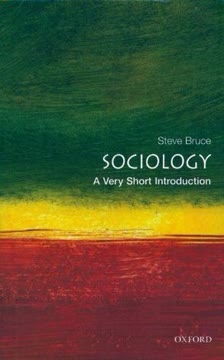








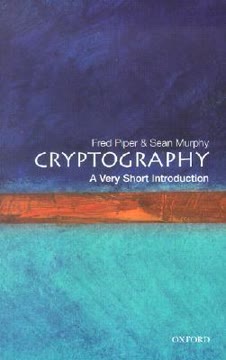
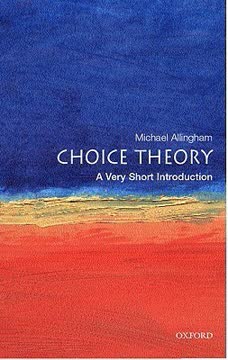
Similar Books
Download PDF
Download EPUB
.epub digital book format is ideal for reading ebooks on phones, tablets, and e-readers.

